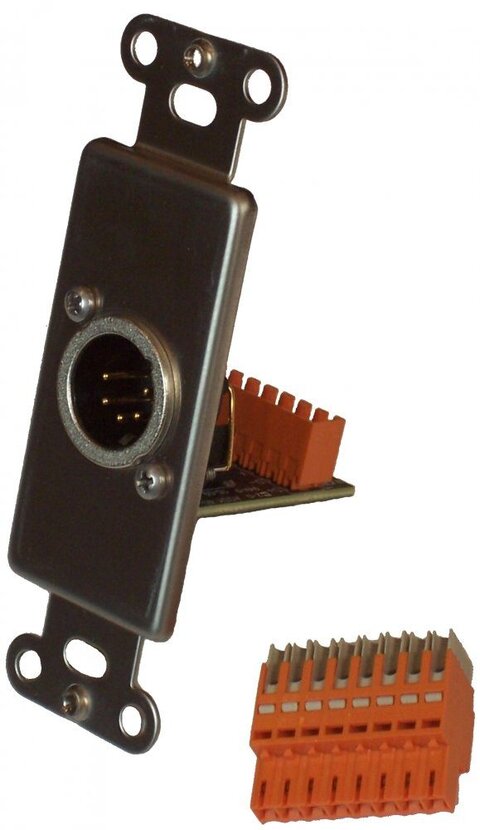There are many "standard" pinouts. I believe below is the most common, and the one specified by ANSI E1.27-2 - 2009:Entertainment Technology - Recommended Practice for Permanently Installed Control Cables for Use with ANSI E1.11 (DMX512-A) and USITT DMX512/1990 Products .Cat 5 is 8 conductors in four pairs. When using it for DMX, one pair is connected to pins 2 & 3. If you are using 5 pin DMX, the second pair should go to pins 4 & 5. The other two pairs (all 4 wires) should all go to pin 1. Keep your polarity consistent. Never parallel a pair! Only one wire each on pins 2,3,4,5. If you one of those crazy rebels using 3 pin, all unused wires should go to pin 1.
Pathway Connectivity Inc. - Cat5 Pinout for DMX.
1. Data 1+
2. Data 1-
3. Data 2+
4. Not Assigned
5. Not Assigned
6. Data 2-
7. Data Link Common (0V) for Data 1
8. Data Link Common (0V) for Data 2



